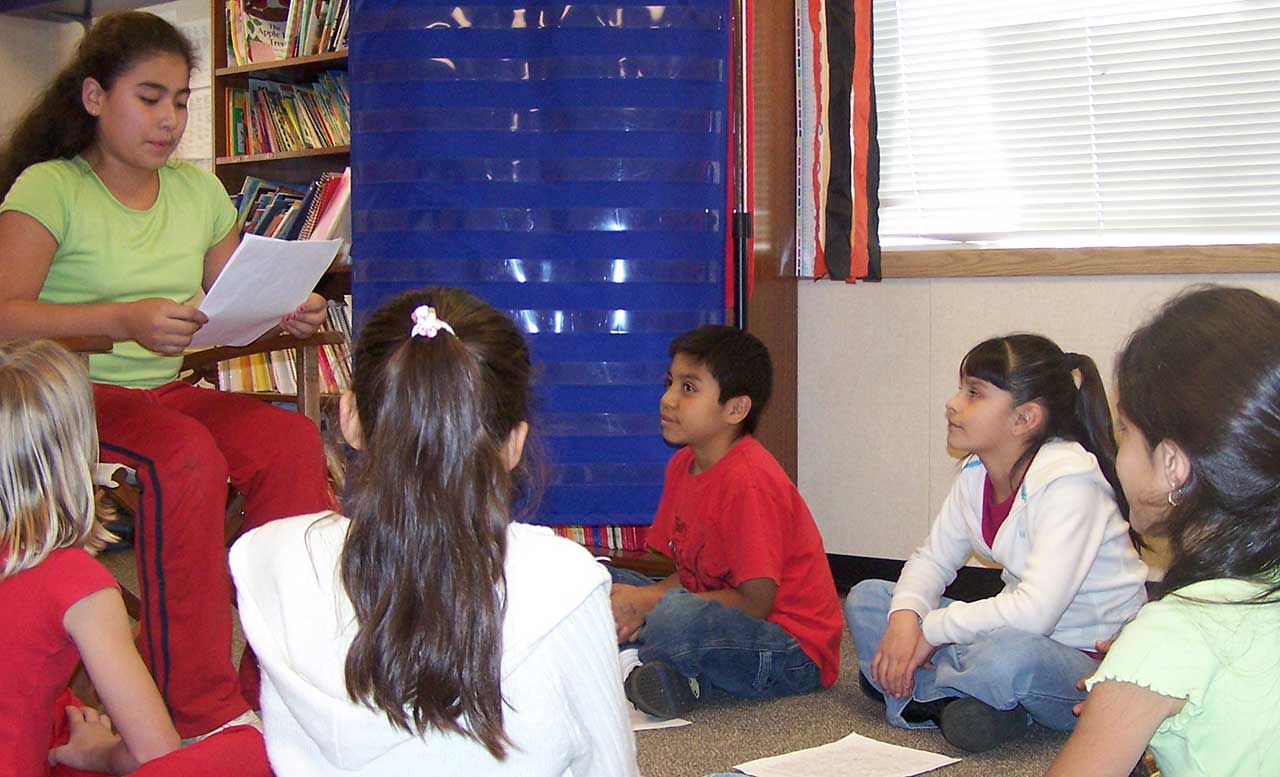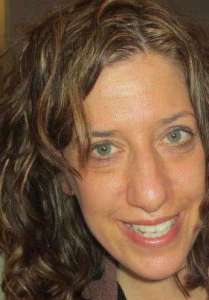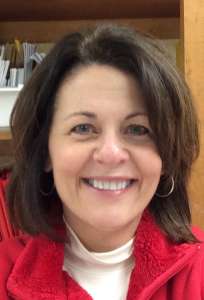Who Owns the Learning? The Importance of Adopting a Facilitative Stance
by Maria Nichols
Henry: No!! They gotta go the other way!
Ella: To the waves!
Teacher: Angel? You have that look …
Angel: [nodding] Yeah – I’m trying to – like, why do they go all wrong?
Sara: Yeah – they get all confused. It’s really, really sad.
Angel: But – like, why?
Teacher: What are you all thinking?
Marceline: It said the lights – I think they’re all glowy. Sorta like stars or something.
Josue: Oh – maybe …
This bit of talk comes from a class of second graders engaged with Philippe Cousteau’s Follow the Moon Home: A Tale of One Idea, Twenty Kids, and a Hundred Sea Turtles. The children were wrestling with the perils that await the newly hatched turtles, including confusion caused by the lights of beachfront homes. Their talk is understandably tentative as they construct, and their teacher’s actively leaning in, watching, listening, and nudging.
Brian Cambourne speaks to the critical nature of engaging children in thinking and talking together in this very way, reminding us that “… learning, thinking, knowing, and understanding are significantly enhanced when one is provided with opportunities for ‘talking one’s way to meaning’…” (1995). This process actually shifts children from passively, compliantly absorbing the teacher’s thinking to actively constructing ideas that are bigger and bolder than possible inside a single mind alone. And, when children construct in this way, they truly own the learning.
In Comprehension Through Conversation (Nichols, 2006), I explored specific talk behaviors – drawing in a range of voices, growing ideas and negotiating meaning – that are foundational to engaging children through talk. But, there’s another critical piece to the process—one that involves a deliberate shift in our own instructional stance.
In the bit of talk about Follow the Moon Home, you may have noticed that the teacher’s interjections were brief, yet powerful. She’s not leading the talk – she’s facilitating the talk. A facilitative stance differs from traditional, teacher-driven instruction in that it doesn’t funnel children’s thinking or attempt to corral their process. Rather, facilitation opens space for children to engage in an honest flow of talk and meaning making.
Thoughtful facilitation has four overarching qualities (Nichols, 2019):
Facilitation Is Invitational
Our facilitation should invite all children’s voices into the meaning making process. We hear an invitation from our 2nd grade teacher when she uses the signs of thinking on Angel’s face to draw him into the conversation, and when she creates space for others to respond to his question. Invitational facilitative moves may sound like this:
- What are you thinking?
- Is anyone wondering ___?
- I’m noticing a look on your face …
Facilitation Is Responsive
As we facilitate, we listen intently to the flow of children’s talk, alert for constructive possibilities. We may nudge specific lines of thinking to deepen and broaden them, or we may nudge towards new lines of thinking – but always in ways that honor the children’s process. Notice that our teacher responds to Angel’s question and Sara’s thinking, nudging for thoughts about their noticing and wondering as opposed to layering in her own predetermined questions. Responsive facilitation may sound like this:
- That’s interesting. Why do you think … ?
- Can you say a little more about that?
- What do others think about this?
Facilitation Is Agentive
Our facilitative language speaks to relationships in the meaning making process, and lays bare our beliefs about children’s capabilities. Language such as, “Now, who can tell me…?” positions us as central to the process, while language such as, “What are you all thinking?” positions children as capable thinkers and collaborators who are central to the process. Agentive facilitation may sound like this:
- What are you thinking?
- Have you considered…?
- How is that thought settling with you?
Facilitation Is Meaning Driven
To support children as they construct understanding together, we attend to the ebb and flow of meaning making, tailoring our facilitation to their needs. We lightly support when meaning is flowing and nudge a bit more if it’s faltering. We might refocus children on a confusing part of the text, encourage them to notice more in a particular passage, or support them as they connect bits of thinking— but always remembering that the meaning needs to be their own. Our teacher’s move to position Angel’s question as a springboard for the children’s thinking communicates exactly this. Meaning-driven facilitation may sound like this:
- Does this thinking seem to make sense…?
- Let’s reread a bit, and see if …
- How do these thoughts fit together …?
When facilitative support is invitational, responsive, agentive, and meaning centered, children come to realize the power and potential of their voice—both individually and collectively. In these classrooms, children truly own their learning.
References
Cambourne, B. (1995). Toward an educationally relevant theory of literacy learning: Twenty years of inquiry. The Reading Teacher, 49(3),182-190.
Costeau, P. (2016). Follow the moon home: A tale of one idea, twenty kids, and a hundred sea turtles. San Francisco: Chronicle Books.
Nichols, M. (2006). Comprehension through conversation. Portsmouth, NH: Heinemann.
Nichols, M. (2019). Building bigger ideas: A process for teaching purposeful talk. Portsmouth, NH: Heinemann.
Maria Nichols is a literacy consultant and Director of School Innovation for the San Diego Unified School District. She is the author of Comprehension Through Conversation. Maria will be a featured speaker at the 2019 National Reading Recovery & K-6 Literacy Conference, February 9-12, in Columbus, OH. Her session entitled “Talk Matters! Supporting English Learners in the Dialogic Classroom” will be presented on Sunday 3:30-5:00 pm and Tuesday 8:30-10:00 am










Stories, humor, quotes, announcements